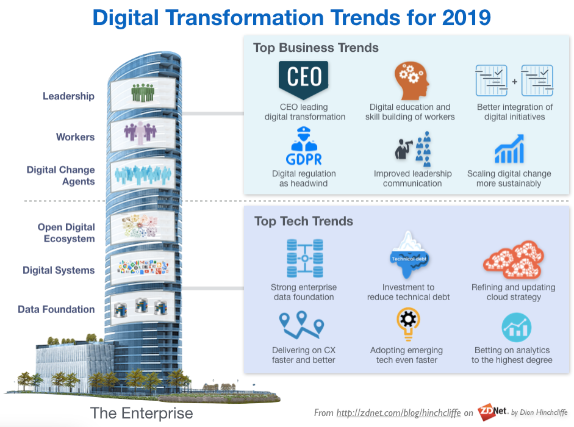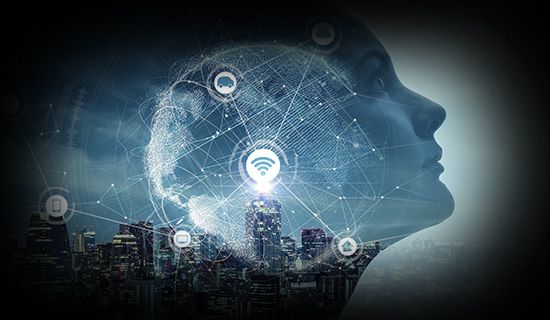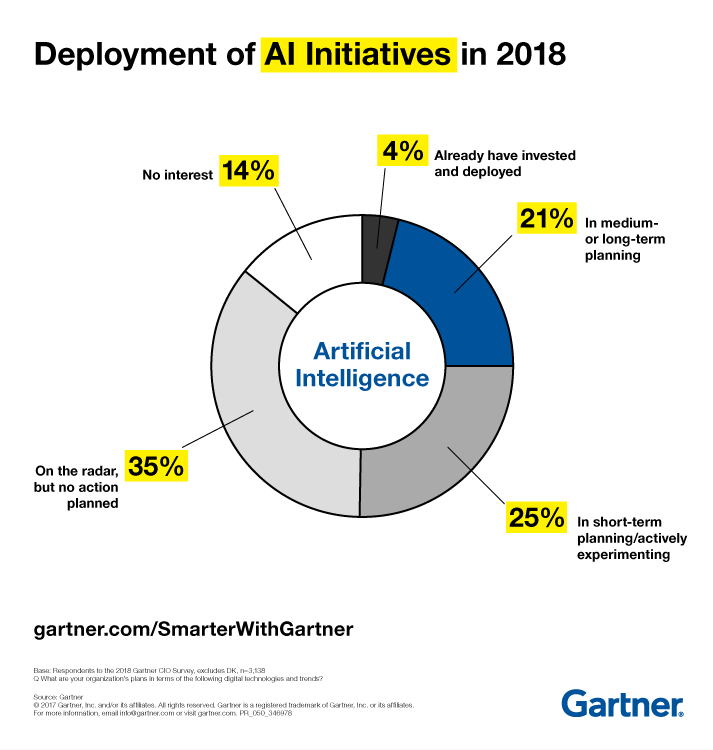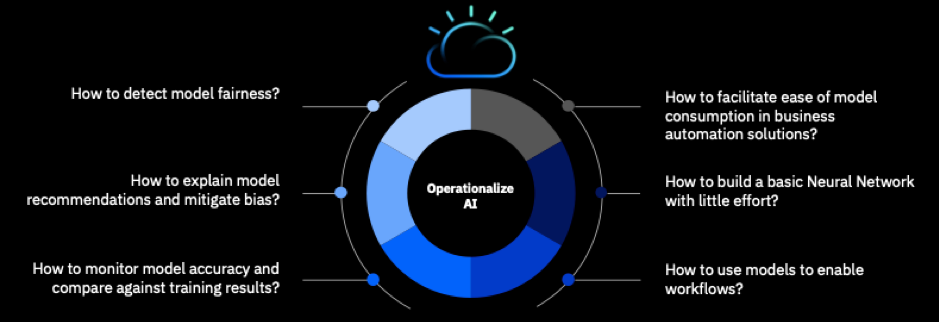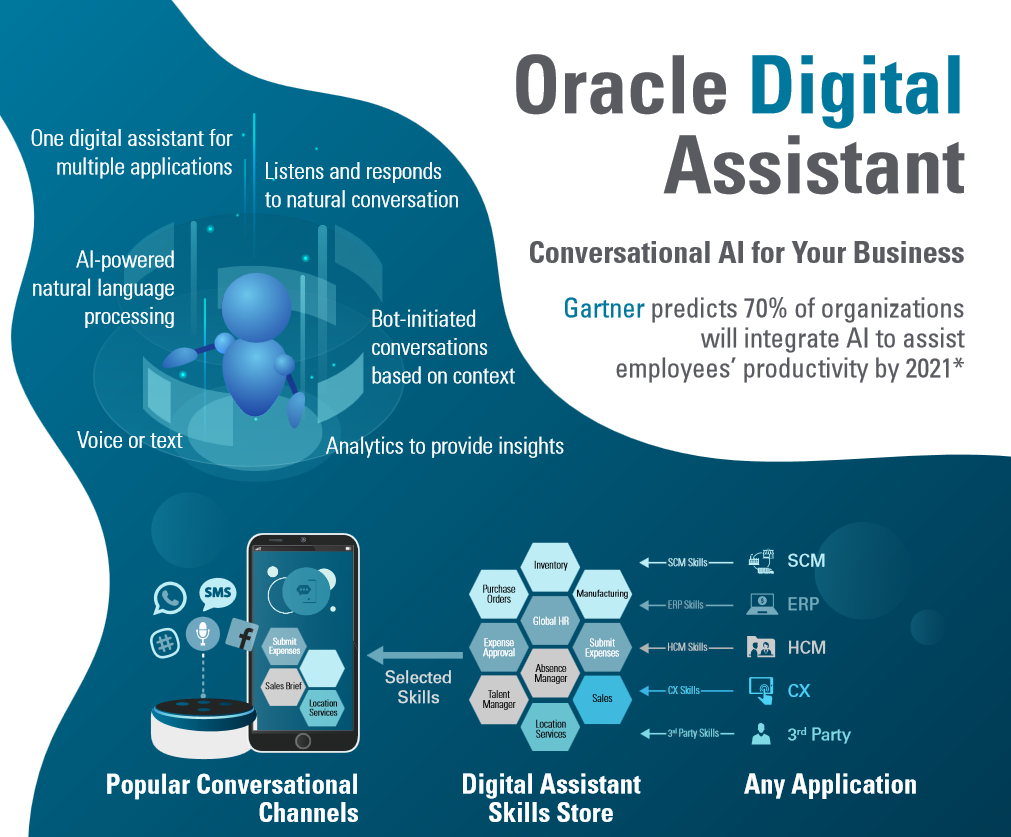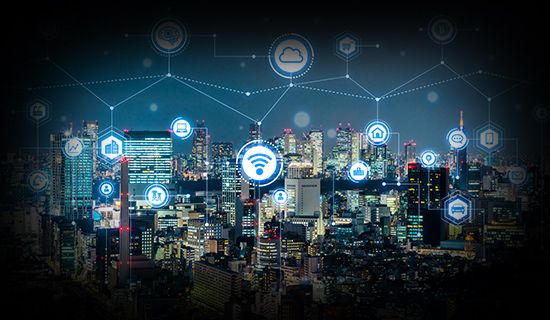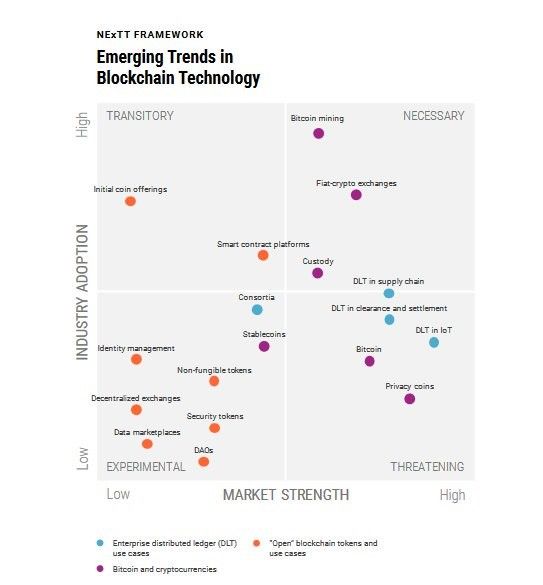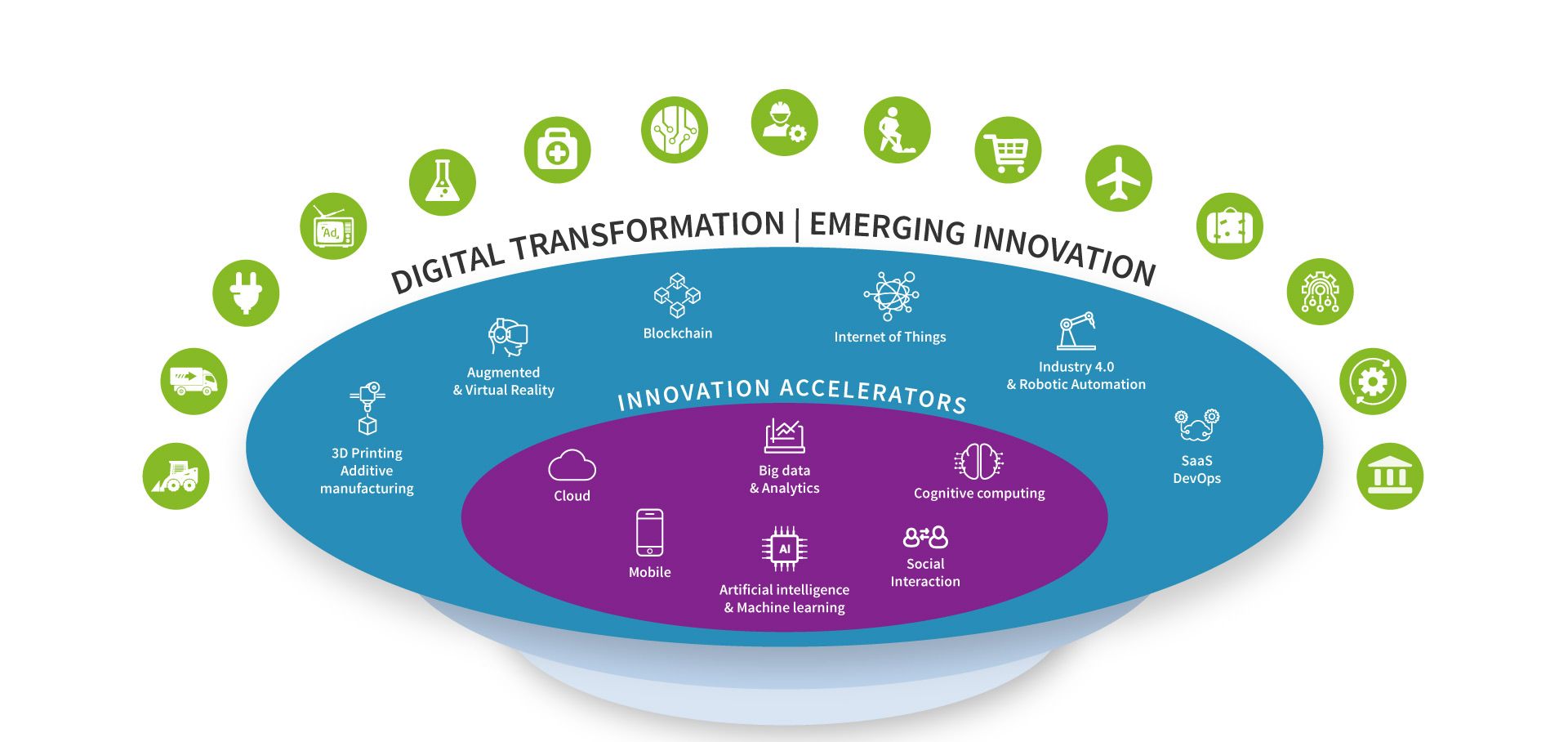
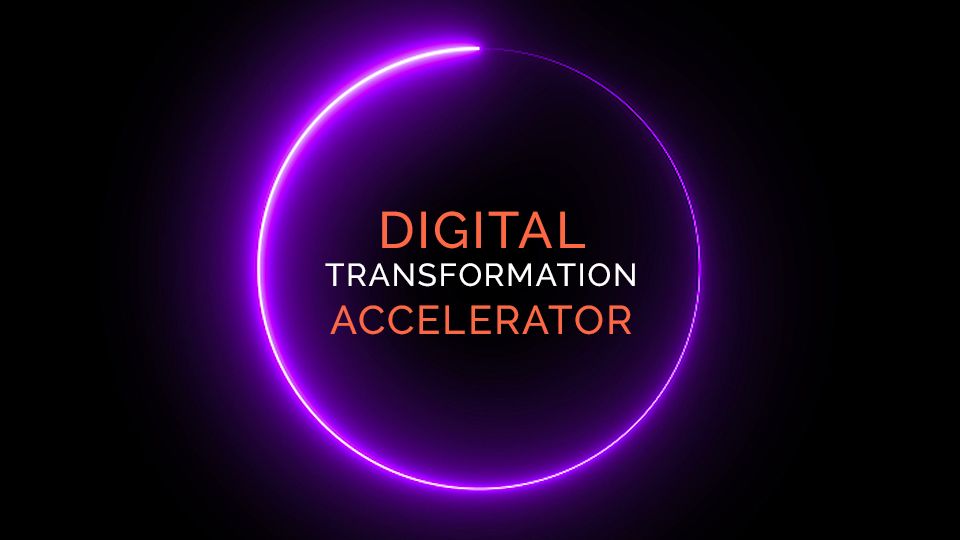

Digitization
Optimization
Transformation
Digital transformation is leading organizations to leverage information technology to drive new business, and investigate how emerging technologies can transform their operations, innovate how they deliver products and services, reduce costs, as well as improve the way they interact with customers, potentially improving retention rates, up-sell, and customer satisfaction.
Emerging technologies are disrupting business models and unleashing new opportunities. They’re transforming how organizations interact with customers, manage employees, streamline workflows, and deliver products and services.
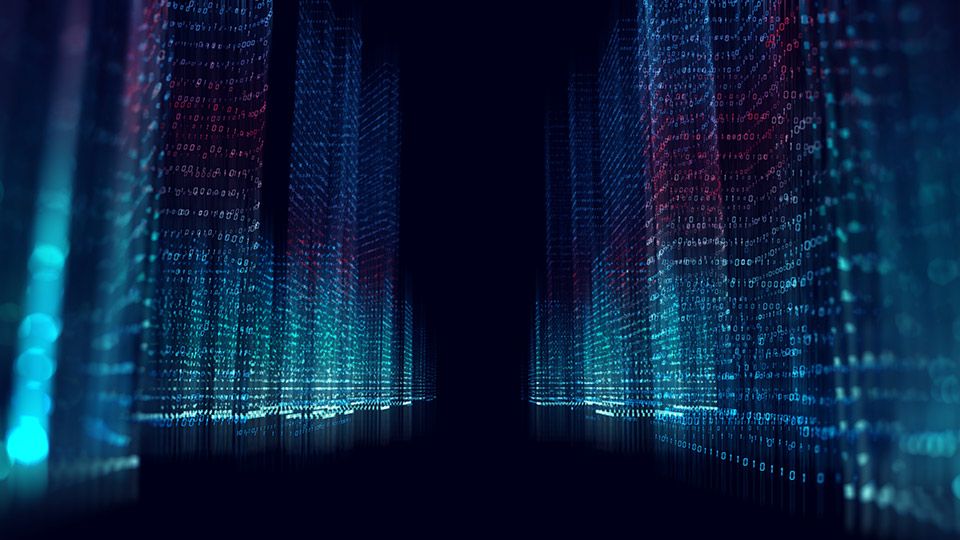

Connected Business
Game Changers & Modern Best Practice Enablers
To make these transformations successful, you must decide which emerging technologies - the cloud, mobile, analytics, social, the Internet of Things, augmented and virtual reality, and big data - are most critical for your organization’s success. And you must be in a position to anticipate future disruptions in your organization and operations.
The emerging Apps and Platforms ecosystem
Gain insight into the new strategies and platforms companies need to capitalize on the emerging Apps and Platforms ecosystem, including how businesses and consumers are connecting to the digital world.
Smartphones, App Ecosystems, Chatbots, Messaging Apps, Voice Assistants, Augmented Reality, Virtual Reality, Smart Cities, Smart Homes, Cybersecurity, Industry 4.0, Advanced manufacturing, IoT Platforms, Robotics, Blockchain.
Major multinational corporations have realized the necessity of a Digital Transformation Accelerator to train staff in digital and manage the innovation and transformation process.
Modern Best Practice Enabler technologies and topics include:
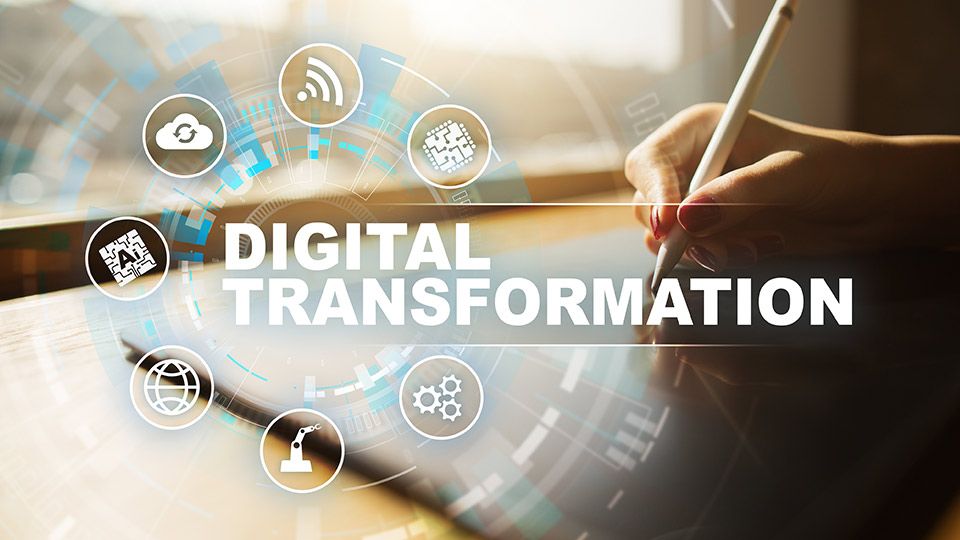
Solutions That Drive Transformation
Enterprise technologists need to rethink their infrastructure strategies, making the move to cloud-based applications.
We help business leaders with actionable insights and visionary advisory for digital enterprise and business initiatives in terms of data management, tools and frameworks, in optimizing and transforming their business, while balancing risk and innovation.
DISRUPTIVE INNOVATION STRATEGY | Next generation digital transformation services & solutions
The rapid improvement in technologies especially in Social, Mobile, Analytics and Cloud (SMAC) have forced organizations to revisit their products, services and business models to stay relevant and stay ahead of upcoming competition.
Emerging Innovation
Tap into new data sources, gain new insights and improve operational efficiencies.
80% of leading companies say digital transformation has increased profitability.
Source: SAP and Oxford Economics
Research shows that emerging digital ecosystems could account for more than trillion in revenue by 2025 (or more than 30% of global corporate revenue), and yet only 3% of established companies have adopted an active platform strategy.
Digital transformation is picking up pace as smart devices, machine learning, Artificial intelligence, Internet of Things, Cognitive computing, Big data and Analytics, Blockchain, Augmented Reality, 3D Printing, SaaS, DevOps, and
Cybersecurity are making new crossroads.
Such disruptive innovation can bring new a level of automation, monitoring, and sensor-enabled insight.

Smart Connected Devices and Emerging Technologies
Research in the context of increasing connectivity and accelerating technology development.
Insights into the PC, tablet, mobile phone, connected devices, and AR/VR technologies.
The adoption of current and next-generation devices, and how mobility and connectivity advances drive the deployment of new devices supporting business transformation.
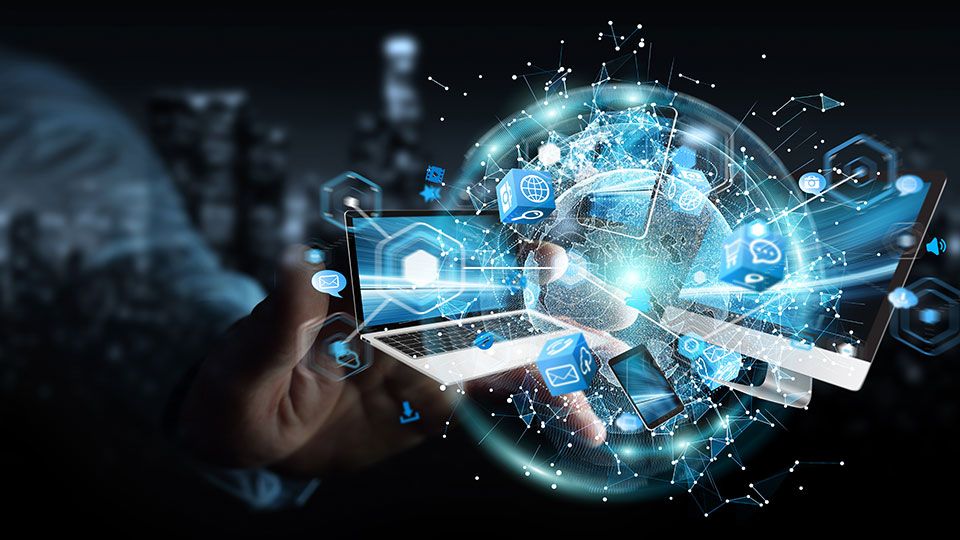

Digital Business Models and Monetization
Insights into monetization models, - enabled by emerging technologies, such as IoT, Blockchain, Augmented and Virtual Reality, AI, and Data-as-a-Service (DaaS), - including subscription, usage, consumption, and outcomes-based pricing approaches, and subscription analytics to understand the best practices: People, process, and technology strategies for business model implementation success.
Technologies, emerging trends, and best practices needed to monetize the digital economy and profiles of vendor business models.
Digital Transformation Strategies & Innovation Acceleration Technologies

Emerging Innovation
Foster a Data-Driven Culture in Your Organization
Your future success hinges on the data you hold and process, be it through analytics to build a single view of the customer, or use of machine learning and AI to optimise and transform key business and operational processes and to reimagine experiences.
Leverage Innovations to Boost your Business
We track growth indicators, market landscapes, strategic trends, technological adoption benchmarks and consumer sentiment and lifestyle trends to identify innovation opportunities and offer actionable insights into next-generation technologies, including data storage, data security, data analytics, DevOps, Mobile and AI, IoT.
Adopting Innovations
Companies must continually modernize apps and features to keep up with competitors, and development enabling dynamic software development play a critical role in determining how fast the innovations are adopted to drive the biggest benefits.
We analyze the business impact of emerging technologies
We address value-based considerations in workplace settings and information management applications, to help you understand when to use what, with what skills, at each stage of an organization’s journey to accelerate the growth of your business.
We explore security concerns and the techniques and technologies that allow deployment and use with a minimum of risk.
According to John Burke, Principal Analyst and CIO, Nemertes Research, IT infrastructure in 2025 will be more, seamlessly mingling on-premises and cloud resources and supporting everything from AI, Blockchain to IoT.


